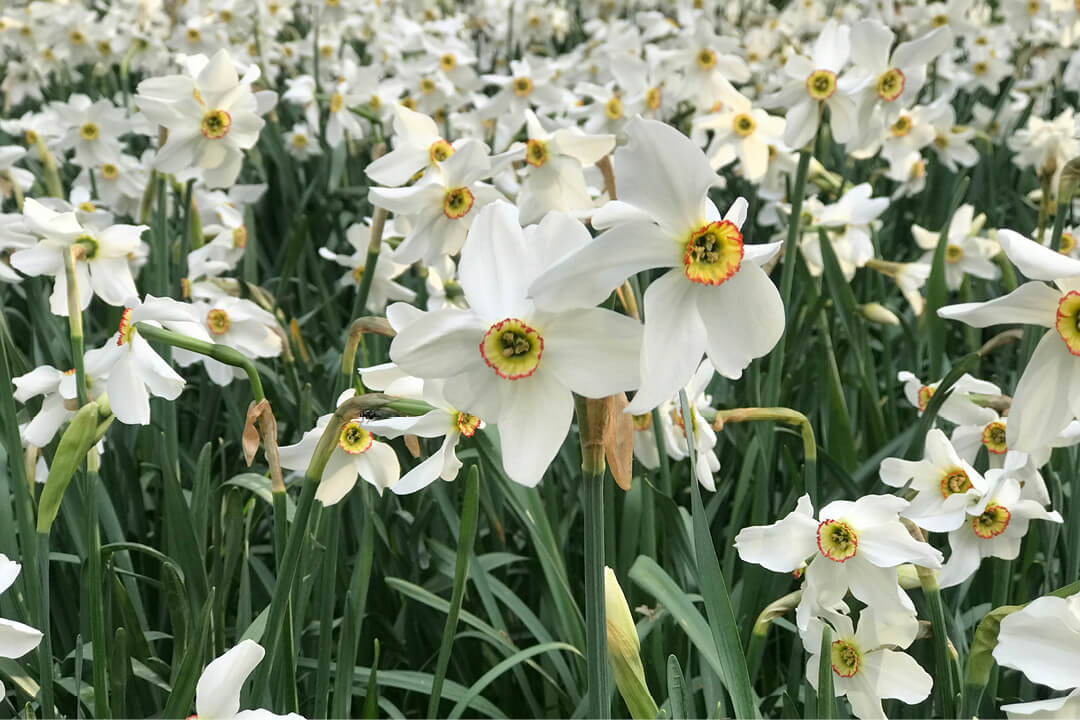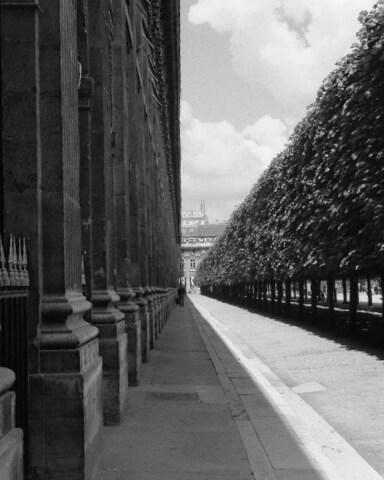The desire for regional flowers is slowly growing
Regional flowers are still a tender plant in many countries. A trend that makes a lot of sense and is fun.
The natural reaction
Hand over a bouquet of flowers and observe what happens in the next moment. In most cases, the head moves towards the bouquet and the person receiving the gift tries to enjoy the scent of the flowers.
However, there is no scent to be caught from most flowers. They have almost always been grown in substrates, sprayed with pesticides, disinfected and preserved for a long flight, most likely sold at an auction in the Netherlands and then transported to a wholesale market or florist, where they had to wait a while for their buyers.
The scent of most cut flower bouquets that we hold in our hands is therefore at best neutral, at worst the scent of chemicals. It doesn’t matter, you might think, because we are so conditioned that we think we smell the desired flower fragrance, thank you nicely for the beautiful flowers and generally only notice the chemical cocktail when we dispose of the flowers.

The longing for the scent
It was the longing for the natural fragrance of flowers that initially inspired a few florists to switch to regional flowers. Because only regional flowers that are grown in naturally composted soil and reach the vase or the bride’s hand in the shortest possible time after cutting have the chance to show off their natural fragrance.
Usually the stems of these flowers are rather delicate and curved compared to flowers with strong, straight stems that have been bred to survive long transportation routes undamaged.
Wedding bouquets are a not insignificant market for the still small number of local flower growers and florists. Many people are prepared to dig a little deeper into their pockets for weddings, as regional flowers are not necessarily cheaper than the long-lasting flowers that are part of a huge market that extends from petrol stations to supermarkets and top florists.

Thursday is flower day
A regional flower that is to be part of a wedding bouquet on Saturday may be cut on Thursday at the earliest by someone who has experience and knows exactly at what stage he or she should cut the flower so that it makes its equally grand entrance on the big day and smells perfect.
The rather soft stems of these flowers are also much more difficult to arrange.
Nevertheless, the desire of many to be able to enjoy a natural flower bouquet that looks as if someone has picked the flowers in the garden in romantic Caspar David Friedrich style is constantly increasing and the still tiny niche market of regional flowers is growing.
When we reported on this topic around five years ago, there were already some harbingers of the slow flower trend in the USA and England. In this country, hardly anyone was interested in regional flowers.
Today, you can find florists in almost all major cities in Germany, Austria and Switzerland, as well as flower growers on the outskirts of towns who rely on regional flowers and natural composting.
It’s a difficult business, because regional flowers are available in our latitudes at best from March to the beginning of November. During the rest of the year, berries, leaves and grasses are the order of the day.
Delicate beauties
If you look to England and consider the delicate flowers that grow even in Scotland’s harsh climate and the beautiful creations that emerge from them, many conventional bouquets, often filled with waxy greenery, look like bulldozers compared to a sleek convertible.
A dainty little floral greeting that is given a little volume and even more fragrance with herbs instead of tropical leaves has its justification and is finding more and more fans.

From Farm to Table
The motto of local cuisine is feasible for anyone who has a garden in which they grow their own flowers.
If you have been saddened by the fact that the roses from your own garden have looked splendid, but usually only had a relatively short lifespan in the vase, a tip from a regional rose grower in England: cut the roses before sunrise, leave them in a bucket of cold water in the dark for two or three hours and then arrange them in the vase.
For all those who don’t want to get up so early at the weekend, it is worth taking a closer look and gaining experience over time as to which flowering phase is best for pruning the roses.

A US trend
Interestingly, the term slow flower and the movement behind it originated in the USA. Amy Stewart, with her publication “Flower Confidential: The Good, the Bad, and the Beautiful”, a book that deals with the cut flower business in the USA, is often cited as the starting point for a movement that suddenly began to question why more and more flower growers in the USA had to give up because they had no chance against the competition from flowers from Ecuador, Kenya, Peru and India.
Slow Flower also has a relatively large following in England and the Slow Flower Growers and Florists Association has a very inspiring website with lots of interesting and beautiful things to see.
The Slow Flower Movement Germany still has some catching up to do here. Although its homepage lists a few addresses in Germany, it claims that this directory is far from complete. Our own research has shown that the offer is already flourishing in many other places.
Just ask around in your own neighborhood.
Photographs © GloriousMe 2024




